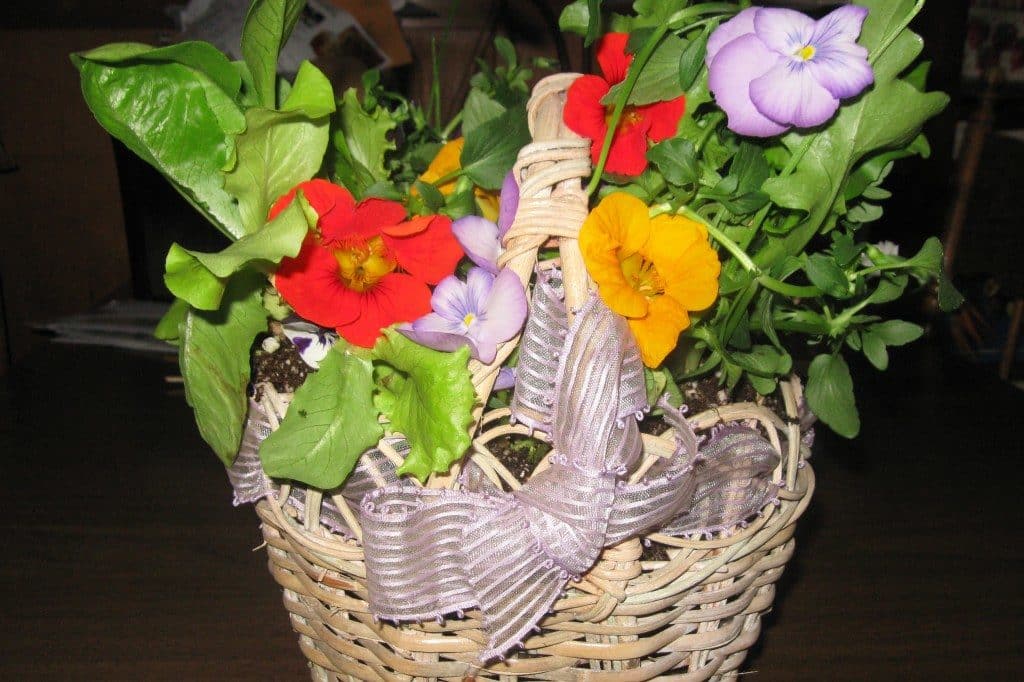Delight family and friends with a “live” Easter basket this year. Eye-catching plant baskets containing tasty, “bunny-worthy” ingredients like lettuce, parsley, edible flowers and carrots make great decorator pieces and save you money. Living Easter baskets provide you with good-for-you goodies long after traditional baskets are empty. Follow these simple steps for creating your own tasty Easter basket.

Prepare your basket
Freshen up your basket and help it stand up to watering by applying spray paint. Before spraying, wipe down the surface and handle to eliminate any dust or dirt. Use a glossy paint, and in a well-ventilated area, spray with several thin coats, waiting for the basket to dry in between coats.
Once it’s dry, line the basket with a 1-inch layer of sphagnum moss or with plastic that you have poked with holes to allow for drainage. Fill with potting soil to within an inch of the top rim of the basket.
Choose plants
Bunnies like nibbling on a wide variety of tasty selections, including the following:
- Greens. Oodles of lettuce varieties exist, including romaine, red leaf and oak. Other greenery for making tasty salads includes arugula, mesclun, cilantro, Swiss chard and kale.
- Herbs. Add pizzazz to your cooking with fresh, tasty herbs, such as basil, chervil, chives, dill, mint, oregano, sage, thyme and the all-time bunny favorite — parsley.
- Carrots. No Easter basket would be complete without carrots. Because this plant is a root vegetable, you must plant carrots by seed. Though they will take some time to grow, you can enjoy the other plants in the basket while you’re waiting. For the quickest results, choose baby carrots, including fun selections that look like golf balls and multi-colored varieties.
- Radishes. Radishes must also be planted by seed. There is even a variety known as the Easter egg radish, which comes in white, purple, pink and red.
- Edible flowers. Blooming plants make a pretty addition to your Easter basket, and some flowers are edible. Good choices include nasturtiums, pansies, Johnny-jump-ups, violets and dianthus.
Planting and Care
- Plant greens, herbs and edible flowers in the basket at the same level they are in their existing nursery containers, leaving 2 to 3 inches between plants. While you want to leave room for growth, you also want the basket to appear full. If you are also planting seeds, sprinkle them in between the plants and press them into the soil to the same depth as the width of the seed. For very small seeds like carrots, simply sprinkle them on the soil surface and then cover with a very thin layer of soil.
- Water your basket well after planting and keep the soil moist but not soggy. If you planted seeds in your basket, mist to avoid washing the seeds away.
- Feed your basket monthly with a ½-strength solution of an organic fertilizer. Organic foods have a NPK ratio listed on the packaging no higher than 15-15-15.
- Be a bunny and harvest the plants in your basket often, which will keep things looking full and lush.
